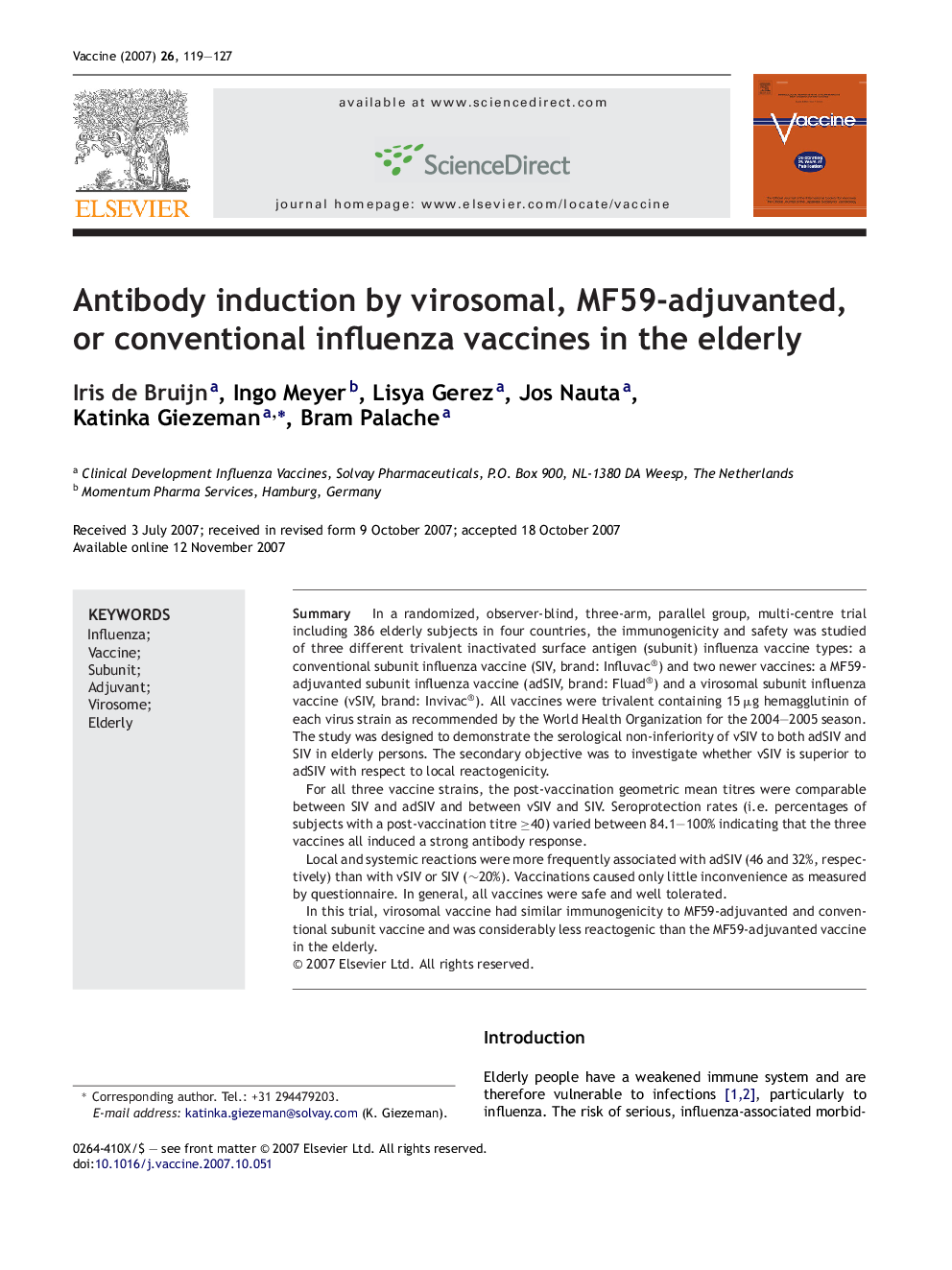| Article ID | Journal | Published Year | Pages | File Type |
|---|---|---|---|---|
| 2406211 | Vaccine | 2007 | 9 Pages |
SummaryIn a randomized, observer-blind, three-arm, parallel group, multi-centre trial including 386 elderly subjects in four countries, the immunogenicity and safety was studied of three different trivalent inactivated surface antigen (subunit) influenza vaccine types: a conventional subunit influenza vaccine (SIV, brand: Influvac®) and two newer vaccines: a MF59-adjuvanted subunit influenza vaccine (adSIV, brand: Fluad®) and a virosomal subunit influenza vaccine (vSIV, brand: Invivac®). All vaccines were trivalent containing 15 μg hemagglutinin of each virus strain as recommended by the World Health Organization for the 2004–2005 season. The study was designed to demonstrate the serological non-inferiority of vSIV to both adSIV and SIV in elderly persons. The secondary objective was to investigate whether vSIV is superior to adSIV with respect to local reactogenicity.For all three vaccine strains, the post-vaccination geometric mean titres were comparable between SIV and adSIV and between vSIV and SIV. Seroprotection rates (i.e. percentages of subjects with a post-vaccination titre ≥40) varied between 84.1–100% indicating that the three vaccines all induced a strong antibody response.Local and systemic reactions were more frequently associated with adSIV (46 and 32%, respectively) than with vSIV or SIV (∼20%). Vaccinations caused only little inconvenience as measured by questionnaire. In general, all vaccines were safe and well tolerated.In this trial, virosomal vaccine had similar immunogenicity to MF59-adjuvanted and conventional subunit vaccine and was considerably less reactogenic than the MF59-adjuvanted vaccine in the elderly.
